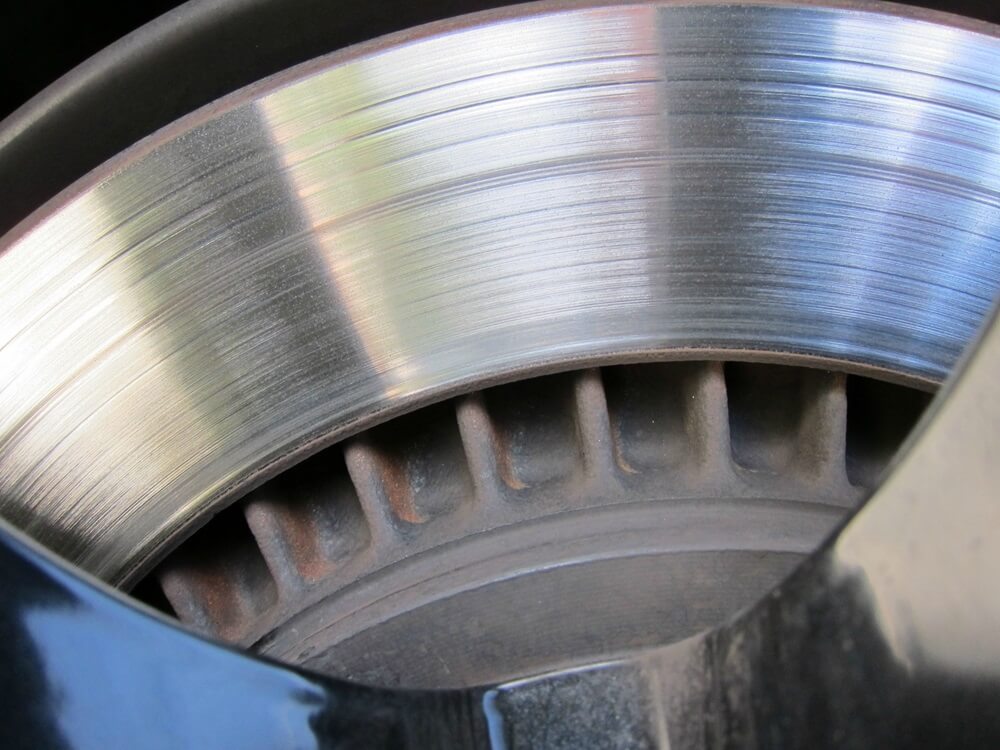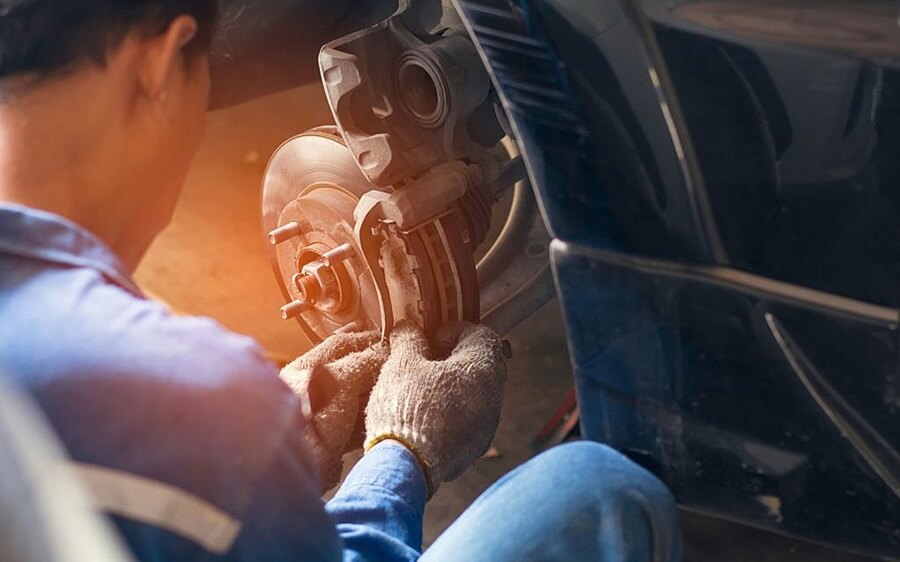Few parts of a car are more important for safety than the braking system. Brake rotors are one of its numerous parts that contribute to effective stopping. But these important parts can get defects like brake rotor grooves and score marks with time, and that can affect how well the brakes work. In this blog article, we’ll examine the reasons why grooves and score markings appear and offer guidance on how to avoid and fix these issues.

What Causes Grooves in Brake Rotors?
Here are some of the reasons that cause grooves in Brake Rotors:
1. Overheating when applying brakes
One of the main causes of grooves in brake rotors is excessive heat generated during braking. The kinetic energy of a car is transformed into thermal energy during deceleration, producing a lot of heat where the brake pads and rotors make contact. There could be harmful effects if this heat exceeds the brake system’s ideal operating range.

Elevated temperatures could lead to the rotor surface expanding and contracting unevenly, resulting in stress areas that could eventually become grooves. Furthermore, excessive heat may speed up the rotor and brake pad wear, increasing the chance of grooving.
2. Brake pad material and rotor type incompatibility
Another crucial factor affecting the production of grooves on brake rotors is the incompatibility between the kind of rotor and the brake pad material. The complexity of this problem arises from the varied composition and features of brake pads combined with particular rotor designs. When certain types of rotors are used with certain brake pad materials, the result could involve uneven wear patterns that eventually show up as grooves. Aggressive brake pad compounds, for example, are intended for high-performance applications but can result in excessive friction on some rotor surfaces, which can accelerate wear and potentially cause grooves.
3. Deterioration over time
Any mechanical part, including brake rotors, will naturally deteriorate over time. The continuous friction between the brake pads and rotors causes material thinning as a car travels. Eventually, grooves can form on the rotor surface as a result of this natural wear process. The rough nature of the braking action causes wear and tear on brake rotors. The rotor material slowly degrades as a result of constant pressure and exposure to heat. Over time, the rotor surface may develop imperfections that take the form of grooves.
4. Aggressive driving behaviors
Brake rotor groove formation is mostly caused by aggressive driving practices. Drivers who brake aggressively, with sudden stops, forceful braking frequently, or extended stops at high speeds expose the brake system to increased stress and extreme temperatures. Aggressive driving can produce strong friction, which can increase wear on the braking rotors and pads. These situations generate an excessive amount of heat, which causes the rotor surface to expand and contract unevenly. This causes stress spots to form, which can eventually become grooves.
5. Driving off-road and being in difficult environments
Off-road driving and driving over rough terrain have a substantial effect on brake rotor wear and durability. The particular difficulties seen in off-road settings such as mud, gravel, boulders, and uneven terrain, expose the braking system to increased strain and abrasion. Because navigating challenging terrain generally requires frequent and hard braking, off-road driving can raise the temperature of the brake system. Elevated temperatures combined with abrasive particles from the surrounding terrain can accelerate rotor wear, causing grooves to progressively form on the rotor surface.
Similar Posts:
- Brake Discs Lipped
- What Happens If You Don’t Grease Brake Pads
- How To Get Air Out Of Brake Lines Without Bleeding
4 Ways to Fix Grooves in Brake Rotors
Resurfacing the rotor can help bring back a smooth surface if the grooves or score marks are not too severe. To guarantee secure and effective braking, however, significant damage will necessitate rotor replacement. Upgrade to performance brake pads and rotors instead; they are made to endure higher temperatures and provide superior resistance to wear and scoring. Determine the underlying causes of repeated groove or score mark creation and take appropriate measures. This can involve changing driving style or taking care of maintenance procedures.
In the following situations, experts should be visited for the inspection and maintenance of brake rotors with grooves:
1. Audible signs of distress
Strange sounds made when braking, such as screaming or grinding, could be signs of problems with the brake system, such as grooved rotors.
2. Pulse and Vibration
When stopping, the car may vibrate or pulse noticeably, which could indicate rotor surface imperfections that need to be professionally inspected.
3. Reduced Braking Efficiency
Extended stopping distances, delayed response, or a noticeable drop in braking performance all indicate potential issues with rotor integrity that should be examined by a specialist.
4. Observable Grooves
To evaluate the level of damage and choose the best course of action for repair or replacement, expert attention is required if the rotor surface displays obvious grooves or deep scoring.
Conclusion
For the safety and extended life of a vehicle, understanding the causes of brake rotor grooves and taking preventative action is essential. Proactive maintenance shows up as a major issue, covering everything from the effects of heat and driving conditions to the function of brake pad material. The risk of grooves is reduced through a combination of careful driving techniques, appropriate component matching, and routine inspections. Drivers can minimize safety risks, assure the best possible brake system performance, and increase the lifespan of important parts by implementing these precautions.


![Grooves in Brake Rotors: 5 Main Causes [Solved] Grooves in Brake Rotors](https://carstale.com/wp-content/uploads/grooves-in-brake-rotors-1024x457.jpg)